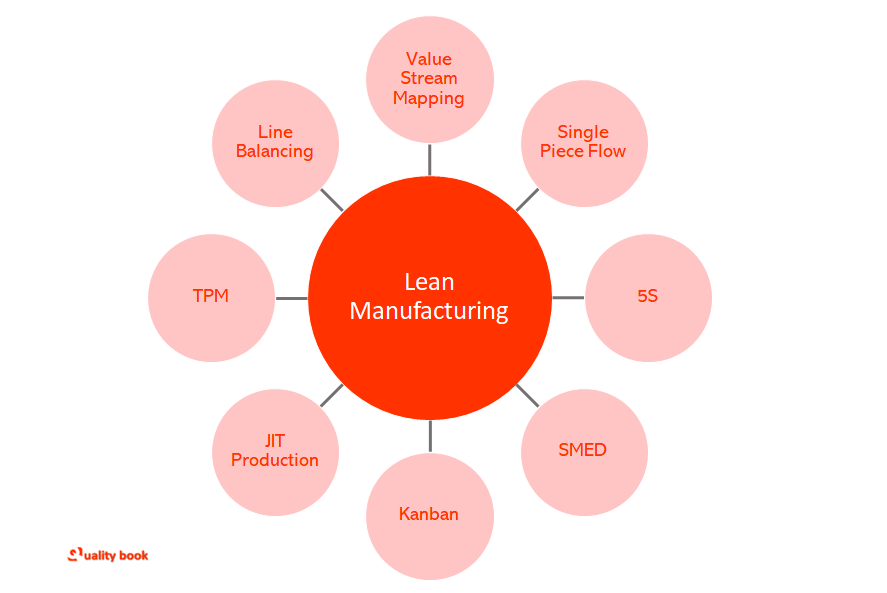Lean manufacturing, or lean production, is a methodology that is a systematic way to reduce waste within production systems without sacrificing productivity. Lean manufacturing actually builds upon a system of eliminating waste within the manufacturing system.
It considers the waste generated from uneven workloads, and overburden, and then minimizes them to increase value and reduce costs.
In each country, Lean Manufacturing is interpreted in different ways, such as in some countries, Lean is considered as a process that reduces waste from every process, and in Japan it is considered a mindset.
Talking about India, like other countries, India also considers Lean Manufacturing as a wonderful technical system, which is considered to be the basic principle of Lean Methodology, which is helpful in eliminating all forms of waste.

Why is Lean Manufacturing called “Lean”?
Simply put, all the processes and activities in the system are made lean, which means that lean manufacturing makes the production process lean from the very beginning by using the least amount of materials, time, etc., used in each process.
For example:
- Less human effort
- Less waste
- Less manufacturing spaces.
- Low investment in equipment
- Short list
- Less time
Therefore, lean manufacturing makes it easier to produce high quality products while using the least number of resources and time by optimizing all processes.
What is the goal of Lean Manufacturing?
As you know, every system which is meant for system and product quality ultimately considers customer satisfaction, however the ultimate goal of lean manufacturing is to provide the right value to the customer through an ideal value creation process. That has zero waste. But through a system that drives production at low prices and slims down time.
Some of the general goals of lean manufacturing are listed below:
- Eliminate waste.
- Build in quality in every process.
- Awareness of all process related waste
- Reduction in cost of elimination of waste
- Creating conditions for improving product quality
- Motivating all employees towards continuous improvement
- Quality first time through
- Streamlined or smooth process flow etc.
- Customer satisfaction
However, the main goal of lean manufacturing is for an organization to continually improve quality, cost, and delivery parameters, which is automatically achieved, or facilitated, by reducing unnecessary waste, the elimination of things that hinder the production process, or.
What are the 8 wastes?
- Overproduction – When producing more than the equal amount of production to meet the demand of consumers, it is called overproduction, which is actually considered waste.
- Waiting – When one process, person or steps have to wait for another process to finish or, there is any kind of interval. Which is really a waste. Who has to wait for someone else to finish their work before starting theirs? Idle time means you are paying for the employee while he is waiting.
- Inventory – When you buy large quantities of raw materials, work-in-process, and other items that need to be stored for a while before they can be used, the potential for waste increases.
- Transportation – Material not moved efficiently that is classified as waste because it promotes best rates due to transportation.
- Over-processing – This is a separate factor that is mostly ignored in India, when processes are performed on the same product more often than necessary or work on the product multiple times, or otherwise work inefficiently So it adds value and becomes waste.
- Speed – If the equipment, personnel, or time does not move at the right speed or pace, that is, it does not suspend the work efficiently, then it can be considered a waste.
- Defects – Any defects must be found at the right time, in the right parameters, with the right efficiency and in finding and correcting production faults.
- Workforce – If workers are not used efficiently and in the right way, then they can be considered a waste.
How to implement?
In fact, to implement Lean Manufacturing, it is divided into eight phases, which are as follows:
- Campaign to eliminate waste from all processes right from the beginning of the process, this is also considered as the main goal of Lean Manufacturing
- Keep the collection of materials to a minimum, or order and use as much as needed.
- Understand and efficiently implement short production cycles.
- Serve to speed up reaction time.
- Allow employee self-sufficiency to grow.
- Integrate quality-testing with every process and ensure.
- Learn and act on customer feedback.
- Reach out to suppliers.
If you understand the approach of Lean Manufacturing properly and implement it in your production processes. Then you will definitely get success. It is not enough to read and understand Lean Manufacturing, it is very important to implement it properly.
It’s not just a process, it’s really a mindset.